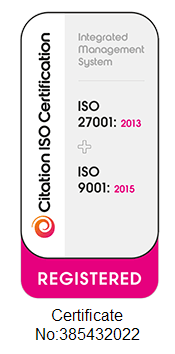When you begin to search for debt guidance, you may find yourself feeling a little overwhelmed with the number of debt solutions, each bringing its own pros, cons and requirements.
To make things a little easier, we’ve put together this blog comparing two formal debt solutions, an Individual Voluntary Arrangement (IVA) and Debt Relief Order (DRO), so you can get a better understanding of how each debt solution could help your financial situation.
What is an IVA?
An IVA is a legally binding agreement between an individual and their creditors. It is a solution that allows a person to only repay a percentage of their unsecured debt to their creditors in affordable monthly payments, usually over a fixed term of five or six years.
Once your IVA is approved by your creditors, interest and charges will be frozen and no further action can be taken by the creditors in relation to your debt. Once an IVA is completed, you will receive a certificate of completion, and the remaining unsecured debt is written off.
What are the requirements for an IVA?
- You must owe a minimum of £5,000
- You must owe at least two creditors
- You must have a surplus income of at least £85
- You must be over the age of 18
What are the pros and cons of an IVA?
Pros
- An IVA will stop further interest rates and charges from being added to your debt.
- The number of monthly repayments is fixed. Usually at 60 or 72 payments.
- Here at Debt Movement, your IVA will be supervised by anInsolvency Practitioner licensed by the Insolvency Practitioners Association.
- An IVA is a legally binding contract, and all unsecured creditors must adhere to its terms. It awards you legal protection against any further creditor action.
- There is usually an element of debt write off, so once you have made all of your required payments, creditors will write off any balances due to them.
Cons
- The default registered at the start of your IVA will stay on your credit file for six years after approval, so your credit rating can be affected.
- You may be required to release equity from your property.
- Your IVA will be listed on the Individual Insolvency Register.
- If your IVA fails, creditors can request the Supervisor to petition for your bankruptcy.
- You need 75% of voting creditors to approve.
What is a DRO?
A Debt Relief Order (DRO) is a way of resolving your financial difficulties if you meet certain criteria. It is designed to be a cheaper and easier alternative to bankruptcy to assist individuals with low assets and low disposable income, originally implemented in 2009.
What are the requirements for a DRO?
For residents of England and Wales:
- Your total debt is less than £30,000
- Your monthly surplus after covering the household bills and living costs is £75 or less
- You do not own a property
- The total value of assets you have are not worth more than £2,000
- If you have a car its value is not more than £2,000
- You have not had a DRO in the last 6 years
For residents in Northern Ireland:
- Your total debt is less than £20,000
- Your monthly surplus after covering the household bills and living costs is £50 or less
- You do not own a property
- The total value of assets you have are not worth more than £1,000
- If you have a car its value is not more than £1,000
- You have not had a DRO in the last 6 years
What are the pros and cons of a DRO?
Pros
- The fee for a DRO is £90 and can be paid in instalments.
- A DRO lasts for 12 months, so it can be a quicker way of becoming financially free.
- You are not required to make any contributions during that time.
- Interest and charges are frozen.
- You will keep any assets, including your car as long as it is valued at less than; £2,000 in England or Wales or £1,000 in Northern Ireland.
Cons
- The DRO process cannot begin until the fee has been paid in full.
- As a formal arrangement, a DRO must be applied for through an authorised representative.
- You cannot enter into a DRO if you have an existing IVA or bankruptcy order.
- You cannot apply within six years of a previously accepted application.
- If your financial circumstances change within 12 months, the DRO can be revoked.
- Your details will be added to the Individual Insolvency Register, and the DRO will stay on your credit file for six years.
Here’s a quick comparison on the main eligibility criteria for an IVA and DRO:
| IVA (England, Wales and Northern Ireland) | DRO (England and Wales) | DRO (Northern Ireland) | |
|---|---|---|---|
| Disposable Income | £85 | £75 or less | £50 or less |
| Debt Level | Minimum of £5,000 | Less than £30,000 | Less than £20,000 |
| Can I be a homeowner? | Yes | No | No |
| Can I own a car? | Yes | Yes – up to the value of £2,000 | Yes – up to the value of £1,000 |
When deciding which debt solution is right for you, you should always seek expert advice before you make any final decisions. Contact Debt Movement today to speak to one of our friendly and impartial guides about which debt solution could be right for you.













